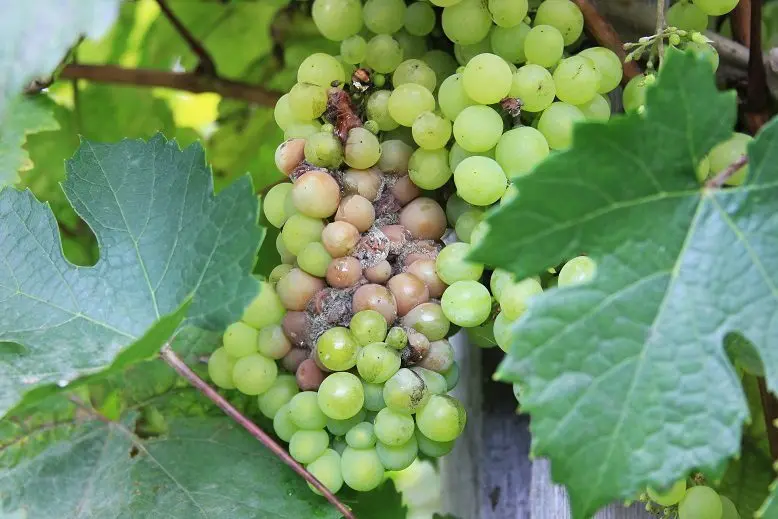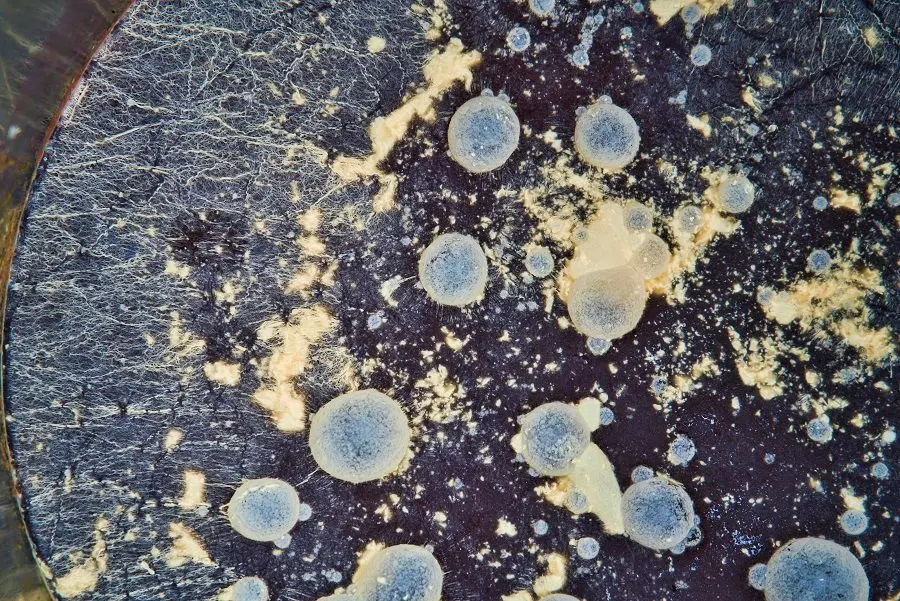During the next check, you may find that the wine has become moldy. Most likely, the cooking technology or temperature regime is violated. If the disease has not had time to spread, the drink can be saved. How to do this, I will tell further.
Wine mold (bloom) – these are colonies of membranous fungi (candida, mycoderma, etc.), which, under favorable conditions, affect the must, processing nutritious organic compounds (sugar, acid, alcohol) into water, carbon dioxide and other substances that spoil the taste of wine.
Signs: first, a thin colorless or white smooth film appears on the surface of the infected wine, which eventually grows, thickens, and begins to stick to the walls of the container. Further, the mold ball noticeably darkens, becomes thick and wrinkled. The wine has an unpleasant smell of rotten water. At the final stage, the colony of mold fungi sinks to the bottom, leading to irreversible spoilage of the drink.

Conditions for the appearance of mold on wine:
- entry of the pathogen into the wort (insufficient sterility of raw materials, tools and containers);
- open access to oxygen;
- temperature 22-28 ° C;
- humidity above 85%;
- the alcohol content is less than 12%;
- low acidity of the must (red grape wines become infected faster than white ones).
Wine mold prevention measures
1. Prevent fungal spores from entering the must. Sterilize all used vessels, lids, stoppers and instruments. Wash hands thoroughly before handling wine material. Carefully sort out the raw materials, preventing rotten and moldy berries from getting into the must.

2. If the method of fermentation on the pulp is used (without separating the skin and pulp from the juice), constantly stir the emerging layer so that the pulp does not come into contact with oxygen for a long time.
3. Do not heavily dilute the must with water, maintaining normal acidity (3-8 g/dm3). If necessary, add citric acid to the wine.
4. Protect the drink from oxygen access by installing a water seal during fermentation and checking its tightness. This will avoid not only the development of mold, but also other diseases of homemade wine, such as vinegar souring.
5. After fermentation, store the drink at a low temperature (10-16°C).
How to remove mold from wine
It is pointless to get rid of developed mold, since the waste products of fungi (water, carbon dioxide, aldehydes) irrevocably spoil the taste of wine, the elimination of the microorganisms themselves will not change anything.

In the early stages of the disease, you can try to save the drink by adhering to the following technology:
1. Transfusion. With a clean finger, make a small hole in the film, through which one end of a rubber tube, for example, from a dropper, is lowered into the middle of the container with infected wine, and the drink is poured into another vessel without sediment and top layer. It is important to monitor the transfusion so that the film does not fall into a new container.
2. Sterilization. Heat the wort to 70-75°C, boil for 2-3 minutes, remove from heat, close the lid tightly, then cool to room temperature. An alternative method is to dip a sulfur wick into a container of wine and hold it until it goes out. Then seal the vessel tightly.
3. Stabilization. I recommend fermenting the wine again, adding fresh juice and (or) sugar to it. Finished wines are also stabilized with alcohol (preferably wine), increasing the strength of the drink to 14-15%.
More examples of mold on wine in the comments to this article.









